CREATIVITY—THE KEY TO BRANDING AT CHRISTMAS
PRESS PLAY>> NOW TO VIEW KEN’S WELCOME VIDEO FOR DECEMBER.
“Here we go again!” That was my first reaction when I opened the paper on Thanksgiving morning and over 30 sale circulars fell out all over the family room floor. As I’ve said in almost every holiday blog for the past 5-6 years, what used to be the best time of the year for creativity in retail advertising has become nothing more than redundancy and boring sale ads that do nothing to differentiate one store from another nor does it create a positive brand promise at the biggest sales season.
But enough of the negativity. It’s Christmas and I’m committed to looking at the positive and how some marketers continue to create loyalty for their brands at this time of the year. As the carol on the iTunes just reminded me, “It’s not the things you do at Christmas time, but the Christmas things you do all year long.” This month, let’s take a look at four companies who have built strong brands all year through creative marketing and through consistent operations that keep the customers coming back despite all of the other choices.
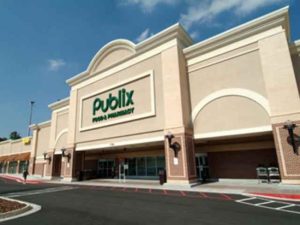 Publix continues to get national attention for its marketing even though its regional player in the grocery store business. There’s a good reason that it may be in just a few southern states but it’s revenues and customer satisfaction is right near the top nationally year after year and growing. Again, this year, Publix captures the spirit of the holidays with a couple of spots that bring out the family values and the sentiment of the season. They carry this through in-store and in their multi-faceted (read as “not just another sale”) print and online messages. Take a look at these spots that not only tug at your heart but also strengthen the promise that ‘shopping is a pleasure” at Publix.
Publix continues to get national attention for its marketing even though its regional player in the grocery store business. There’s a good reason that it may be in just a few southern states but it’s revenues and customer satisfaction is right near the top nationally year after year and growing. Again, this year, Publix captures the spirit of the holidays with a couple of spots that bring out the family values and the sentiment of the season. They carry this through in-store and in their multi-faceted (read as “not just another sale”) print and online messages. Take a look at these spots that not only tug at your heart but also strengthen the promise that ‘shopping is a pleasure” at Publix.
Thanksgiving spot: http://youtu.be/08rj14I6QPY
Christmas : https://www.youtube.com/watch?v=CfkGKdXXpVM
John Lewis is a chain of stores in the UK that has taken a creative approach to building associate loyalty by making them all partners in the business. The stores have set the standard for the past several years for breakthrough marketing and they live up to it in-store with great merchandising and outstanding customer service. At Christmas, John Lewis also gets the public talking about its commercials by producing stories that are not just creative but they also tell a story that could easily be made into a holiday classic. This year the company (www.johnlewis.com) capitalized on our love for penguins with a story of a boy and his imagination during the holidays.
John Lewis Penguin spots: https://www.youtube.com/watch?v=iccscUFY860
Hallmark makes every holiday and personal event of the year a special event but at Christmas, the company has always “cared enough to give its very best” with commercials that hit the heart and solidify its number one share in the greeting card business. It’s ongoing Christmas movies series on its own Hallmark Channel are typical of the great marketing that the company does. It’s Hallmark Hall of Fame movies are award winning and feature award winning commercials like the one below which keeps customers loyal whether online or in the store.
Hallmark Couple at her parents: http://www.hallmark.com/commercials/#
Sainsbury is one of the UK’s top retailers and certainly its strongest food store chain. It has consistently grown market share with state of the art stores and outstanding marketing whether its their CRM program or outstanding marketing. It this year’s television commercial, the company goes back to WWI to relate a true story about how the British troops and German army met on the same battlefield and decided to put down their weapons and celebrate Christmas for just one day before getting back to the war. It’s a story that deserves a full-length movie but does a great job for Sainsbury with a commercial that sets the holiday standard.
Sainsbury WWI Christmas: http://m.youtube.com/watch?feature=youtu.be&v=NWF2JBb1bvM
I hope you took the time to view these great examples of creativity that helps not only with a Christmas message but also with a solid brand strategy that works all year long. Try it yourself.
Merry Christmas and a Happy New Year.

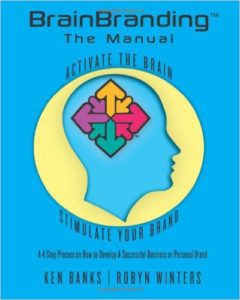 One of the principles that we stress in our book, BrainBranding. Activate the Brain. Stimulate Your Brand, is that your marketing communications have to always be in sync with your brand strategy. Whether it’s your advertising, your PR, your signage, or your designs, what you communicate should reinforce what you want to be famous for with your customers and prospects. I remember a few years ago when I was directing the major annual sales meeting for our operations and merchandising staffs at Eckerd, we contracted with a well-known and respected speaker on customer service and employee relations to give a keynote presentation to the over 1000 associates and suppliers in attendance. I had seen this expert at another conference and thought his message was right on for our strategy to better serve our customers and build employee morale. When he arrived at the meeting hall, he immediately went into a rage that the video setup was not as requested, using four-letter expletives and basically talking to us (who were paying him a premium fee) like we were imbeciles. If it hadn’t been 2 hours before his presentation, I would have cancelled on the spot and I assure you that no one who was present at the rehearsal believed a word of his presentation. His actions were not in rhythm with his message nor his promotional materials. I can assure you that later as I became a professional speaker, I never recommended this individual when asked for a recommendation.
One of the principles that we stress in our book, BrainBranding. Activate the Brain. Stimulate Your Brand, is that your marketing communications have to always be in sync with your brand strategy. Whether it’s your advertising, your PR, your signage, or your designs, what you communicate should reinforce what you want to be famous for with your customers and prospects. I remember a few years ago when I was directing the major annual sales meeting for our operations and merchandising staffs at Eckerd, we contracted with a well-known and respected speaker on customer service and employee relations to give a keynote presentation to the over 1000 associates and suppliers in attendance. I had seen this expert at another conference and thought his message was right on for our strategy to better serve our customers and build employee morale. When he arrived at the meeting hall, he immediately went into a rage that the video setup was not as requested, using four-letter expletives and basically talking to us (who were paying him a premium fee) like we were imbeciles. If it hadn’t been 2 hours before his presentation, I would have cancelled on the spot and I assure you that no one who was present at the rehearsal believed a word of his presentation. His actions were not in rhythm with his message nor his promotional materials. I can assure you that later as I became a professional speaker, I never recommended this individual when asked for a recommendation.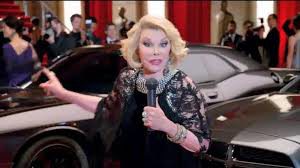 With Joan Rivers’ passing recently, I was reminded of how out of rhythm Dodge auto advertising was when they ran a campaign using her to promote their award event earlier this year. Chrysler has been trying to reposition the Dodge brand as a serious performance line but the Joan Rivers spots were silly and had no rhythm with the spots that ran earlier nor the current “heritage” spots running now.
With Joan Rivers’ passing recently, I was reminded of how out of rhythm Dodge auto advertising was when they ran a campaign using her to promote their award event earlier this year. Chrysler has been trying to reposition the Dodge brand as a serious performance line but the Joan Rivers spots were silly and had no rhythm with the spots that ran earlier nor the current “heritage” spots running now. JCPenney’s rebranding efforts a couple years ago were well documented and pushed the company’s stock to all-time lows and comp sales to embarrassingly negative figures. It cost the CEO his job, the CMO left shortly after joining the company, and the customers stayed away as the company (which had positioned itself successfully versus traditional department stores and discount chains) abandoned providing consistent promotion mixed with strong positioning. The pendulum has swung back to aggressive promoting (like Kohl’s) but without the positioning that differentiated JCP from other retailers. Again it’s branding has been lost in a barrage of sales with no rhythm with the brand that was so strong in the past and stores that really are appealing to today’s customers.
JCPenney’s rebranding efforts a couple years ago were well documented and pushed the company’s stock to all-time lows and comp sales to embarrassingly negative figures. It cost the CEO his job, the CMO left shortly after joining the company, and the customers stayed away as the company (which had positioned itself successfully versus traditional department stores and discount chains) abandoned providing consistent promotion mixed with strong positioning. The pendulum has swung back to aggressive promoting (like Kohl’s) but without the positioning that differentiated JCP from other retailers. Again it’s branding has been lost in a barrage of sales with no rhythm with the brand that was so strong in the past and stores that really are appealing to today’s customers.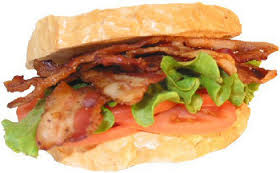 Subway sandwich shops have grown successfully with a brand that positioned them as a healthier alternative to traditional fast food chains. However, now it seems that they are piling on more junk food between the bread and more cholesterol and fat along with it. The messages are out of rhythm with the healthier approach without promising too much benefit. We all love bacon on our sandwiches but really enough is enough.
Subway sandwich shops have grown successfully with a brand that positioned them as a healthier alternative to traditional fast food chains. However, now it seems that they are piling on more junk food between the bread and more cholesterol and fat along with it. The messages are out of rhythm with the healthier approach without promising too much benefit. We all love bacon on our sandwiches but really enough is enough.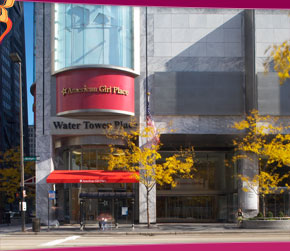 Speaking of the experience, we visited the American Girl store in Water Tower Place in Chicago (our granddaughter’s favorite place in the world) and talk about an experience! We were there on a Monday and the place was packed with 5-8 year-old girls accompanying their dolls (or girls as they call them) on a special shopping trip. Parents and grandparents were there too to pay for everything, but it was fascinating to see how AG has built an outstanding brand by building an experience for dolls that is so realistic and special that price is no object. Weather it’s getting an outfit for gymnastics or camping, they have it all and the girls love it. Need a new hairstyle; they’ve got a salon with specialists who can make that synthetic hair glow. Lunch? There’s a restaurant just for you and your dolls with special seating for the little ones. Even the rest rooms have special amenities for the American Girls while their live friends take care of business. The division of Mattel (what a sequel to Barbie!) now has 19 stores which offer what it calls “experiential retail” and if you look at their website for each store your daughter can choose from all kinds of experiences from birthday parties to a night out with your “girl” (for $195-240 per person). Starting out as a catalogue retailer, the company has created a cult brand that “inspires” their customers not just sell them a doll and its accessories. Their online business flourishes with an easy way for grandma to get just the right birthday or Christmas present without having to find a store. American Girl has learned that the brand is an experience and the more exciting they make it; the more loyal is their customer (and her parents).
Speaking of the experience, we visited the American Girl store in Water Tower Place in Chicago (our granddaughter’s favorite place in the world) and talk about an experience! We were there on a Monday and the place was packed with 5-8 year-old girls accompanying their dolls (or girls as they call them) on a special shopping trip. Parents and grandparents were there too to pay for everything, but it was fascinating to see how AG has built an outstanding brand by building an experience for dolls that is so realistic and special that price is no object. Weather it’s getting an outfit for gymnastics or camping, they have it all and the girls love it. Need a new hairstyle; they’ve got a salon with specialists who can make that synthetic hair glow. Lunch? There’s a restaurant just for you and your dolls with special seating for the little ones. Even the rest rooms have special amenities for the American Girls while their live friends take care of business. The division of Mattel (what a sequel to Barbie!) now has 19 stores which offer what it calls “experiential retail” and if you look at their website for each store your daughter can choose from all kinds of experiences from birthday parties to a night out with your “girl” (for $195-240 per person). Starting out as a catalogue retailer, the company has created a cult brand that “inspires” their customers not just sell them a doll and its accessories. Their online business flourishes with an easy way for grandma to get just the right birthday or Christmas present without having to find a store. American Girl has learned that the brand is an experience and the more exciting they make it; the more loyal is their customer (and her parents).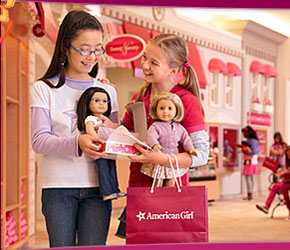 Whether it’s baseball or dolls, creating a memorable experience is the best way to build a relationship that makes a brand really special—and successful.
Whether it’s baseball or dolls, creating a memorable experience is the best way to build a relationship that makes a brand really special—and successful. Williams is one of the top brands in household painting. They have built a loyal following over the years with a quality product sold in a service environment. The key to Sherwin Williams retail success—in the face of aggressive competition from the big box DIY stores like Home Depot and Lowe’s—is the reliance on the personalized service and expertise that their stores have provided almost since the beginning. Excellent selection in a convenient environment with experienced, friendly paint experts who can help you find exactly the right paint in the right color with right tools to make the job a success. However, Sherwin Williams has utilized the new media to add to the personalized value that they have always provided. Using its app, ColorSnap, makes finding the right color not only a snap but enables the customer to visualize how it will look in their home. The app enables the customer to take a photo or scan a color that he/she wants to match in their home project. You simply download to the app and SW analyzes it and provides you with the exact match to your color choice. Then they go a step further and enable you to take a photo of your house or room and then, using their app, you can insert the new color over the area you plan to paint. You can even mask it around windows or doors so you can really get an accurate picture of how the job will look before buying the paint or getting a sample and painting spots on the walls to see what looks best. Seeing the entire project in the right color makes it much more accurate and representative of what the finished job is going to look like. You can then save the various color applications on line/phone and bring into the store and discuss with the paint expert. The process adds technology to a great brand based on personalized service. And, speaking from personal experience, it really works.
Williams is one of the top brands in household painting. They have built a loyal following over the years with a quality product sold in a service environment. The key to Sherwin Williams retail success—in the face of aggressive competition from the big box DIY stores like Home Depot and Lowe’s—is the reliance on the personalized service and expertise that their stores have provided almost since the beginning. Excellent selection in a convenient environment with experienced, friendly paint experts who can help you find exactly the right paint in the right color with right tools to make the job a success. However, Sherwin Williams has utilized the new media to add to the personalized value that they have always provided. Using its app, ColorSnap, makes finding the right color not only a snap but enables the customer to visualize how it will look in their home. The app enables the customer to take a photo or scan a color that he/she wants to match in their home project. You simply download to the app and SW analyzes it and provides you with the exact match to your color choice. Then they go a step further and enable you to take a photo of your house or room and then, using their app, you can insert the new color over the area you plan to paint. You can even mask it around windows or doors so you can really get an accurate picture of how the job will look before buying the paint or getting a sample and painting spots on the walls to see what looks best. Seeing the entire project in the right color makes it much more accurate and representative of what the finished job is going to look like. You can then save the various color applications on line/phone and bring into the store and discuss with the paint expert. The process adds technology to a great brand based on personalized service. And, speaking from personal experience, it really works. Quest Diagnostics has grown to be the largest provider of health diagnostic lab work in the US with over 2200 lab patient centers and over 41000 associates. As lab work has become an important part of almost any doctor’s appointment today, Quest has become the preferred choice due to its convenience and service. However, as a lab user for many years, it has not always been the most convenient or pleasant experience. In recent years, the company has really made the effort to make the experience easier, quicker and more professional and painless (in many ways). Now the company has added the My Quest app so that you can not only schedule an appointment online so there is literally no wait and you can also follow up on the results right from your smart phone. By simply registering online and installing the app, getting lab work done is easier and more convenient than ever and now works with your schedule rather than the lab’s availability. It also facilitates the communication between lab and physician so that your results are more timely and easily understood by the patient. In addition to building a preferred brand for a very important and frequently used service, Quest has used the new media to make the entire experience a brand building opportunity.
Quest Diagnostics has grown to be the largest provider of health diagnostic lab work in the US with over 2200 lab patient centers and over 41000 associates. As lab work has become an important part of almost any doctor’s appointment today, Quest has become the preferred choice due to its convenience and service. However, as a lab user for many years, it has not always been the most convenient or pleasant experience. In recent years, the company has really made the effort to make the experience easier, quicker and more professional and painless (in many ways). Now the company has added the My Quest app so that you can not only schedule an appointment online so there is literally no wait and you can also follow up on the results right from your smart phone. By simply registering online and installing the app, getting lab work done is easier and more convenient than ever and now works with your schedule rather than the lab’s availability. It also facilitates the communication between lab and physician so that your results are more timely and easily understood by the patient. In addition to building a preferred brand for a very important and frequently used service, Quest has used the new media to make the entire experience a brand building opportunity.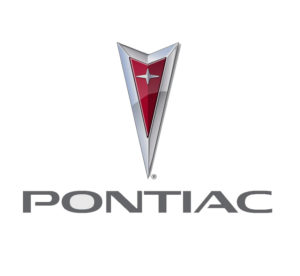 I think BMW could have taken over Pontiac and made it an American Driving Machine. For years Pontiac was branded as a performance car and by narrowing its brand focus would still have appeal to a younger, American driver.
I think BMW could have taken over Pontiac and made it an American Driving Machine. For years Pontiac was branded as a performance car and by narrowing its brand focus would still have appeal to a younger, American driver.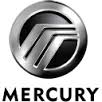 Mercury had a major share of the mature drivers (it was #1 overall in Florida for many years). If Volvo had taken over the brand and refocused it as something more than a Ford with a different emblem and model name, it could capitalize on the quality and dependability that Volvo is known for with the comfort that older Americans want.
Mercury had a major share of the mature drivers (it was #1 overall in Florida for many years). If Volvo had taken over the brand and refocused it as something more than a Ford with a different emblem and model name, it could capitalize on the quality and dependability that Volvo is known for with the comfort that older Americans want. Saturn was one of the best branding stories in any category when it was introduced. Nissan or Toyota could certainly have applied some of their innovations to keep the loyal Saturn customers and again focus the brand on sedans that put it on the map originally (rather than SUV’s and sports cars).
Saturn was one of the best branding stories in any category when it was introduced. Nissan or Toyota could certainly have applied some of their innovations to keep the loyal Saturn customers and again focus the brand on sedans that put it on the map originally (rather than SUV’s and sports cars).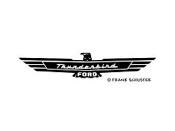 Thunderbird was a legendary sports car like Corvette and the brand was one of the most successful re-introductions a few years ago. Think what someone like Suburu or Kia could have done to bring Asian quality and design to a sporty new T-bird brand.
Thunderbird was a legendary sports car like Corvette and the brand was one of the most successful re-introductions a few years ago. Think what someone like Suburu or Kia could have done to bring Asian quality and design to a sporty new T-bird brand. Oldsmobile could have also capitalized on the Baby Boomer market who still wanted some of the quality that their “fathers” wanted in their cars. With a reputation from Hyundai or Land Rover and some re-styling that doesn’t look like another Buick, the brand could prosper in today’s market.
Oldsmobile could have also capitalized on the Baby Boomer market who still wanted some of the quality that their “fathers” wanted in their cars. With a reputation from Hyundai or Land Rover and some re-styling that doesn’t look like another Buick, the brand could prosper in today’s market. Look how Fiat/Chrysler has re-introduced the Fiat 500 which had a terrible brand reputation in the ’60’s and ’70’s in the U.S. However, now it’s cute, trendy, and appeals to a whole new market that didn’t even know the care ever existed before.
Look how Fiat/Chrysler has re-introduced the Fiat 500 which had a terrible brand reputation in the ’60’s and ’70’s in the U.S. However, now it’s cute, trendy, and appeals to a whole new market that didn’t even know the care ever existed before.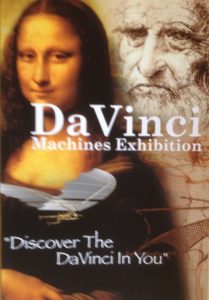 designer. While there were only a limited number of his designs on display (his notes reflected several thousand ideas that were developed), I was convinced that every one was developed for a particular reason—usually military weapons—that provided a solution to a particular problem or opportunity. Whether it was the ball bearing or a device that helped build a pyramid before hydraulics, the value of these concepts increased as the need for their benefits became more obvious in providing a competitive advantage over the users adversary.
designer. While there were only a limited number of his designs on display (his notes reflected several thousand ideas that were developed), I was convinced that every one was developed for a particular reason—usually military weapons—that provided a solution to a particular problem or opportunity. Whether it was the ball bearing or a device that helped build a pyramid before hydraulics, the value of these concepts increased as the need for their benefits became more obvious in providing a competitive advantage over the users adversary.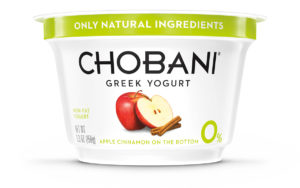 The point is that the first essential characteristic of a successful brand is to have a reason for being. The initial work is to determine why someone would try your product—or keep using it—and then reinforce this reason with an effective, creative message that cuts through the clutter and truly differentiates your brand from the others.
The point is that the first essential characteristic of a successful brand is to have a reason for being. The initial work is to determine why someone would try your product—or keep using it—and then reinforce this reason with an effective, creative message that cuts through the clutter and truly differentiates your brand from the others.
Recent Comments